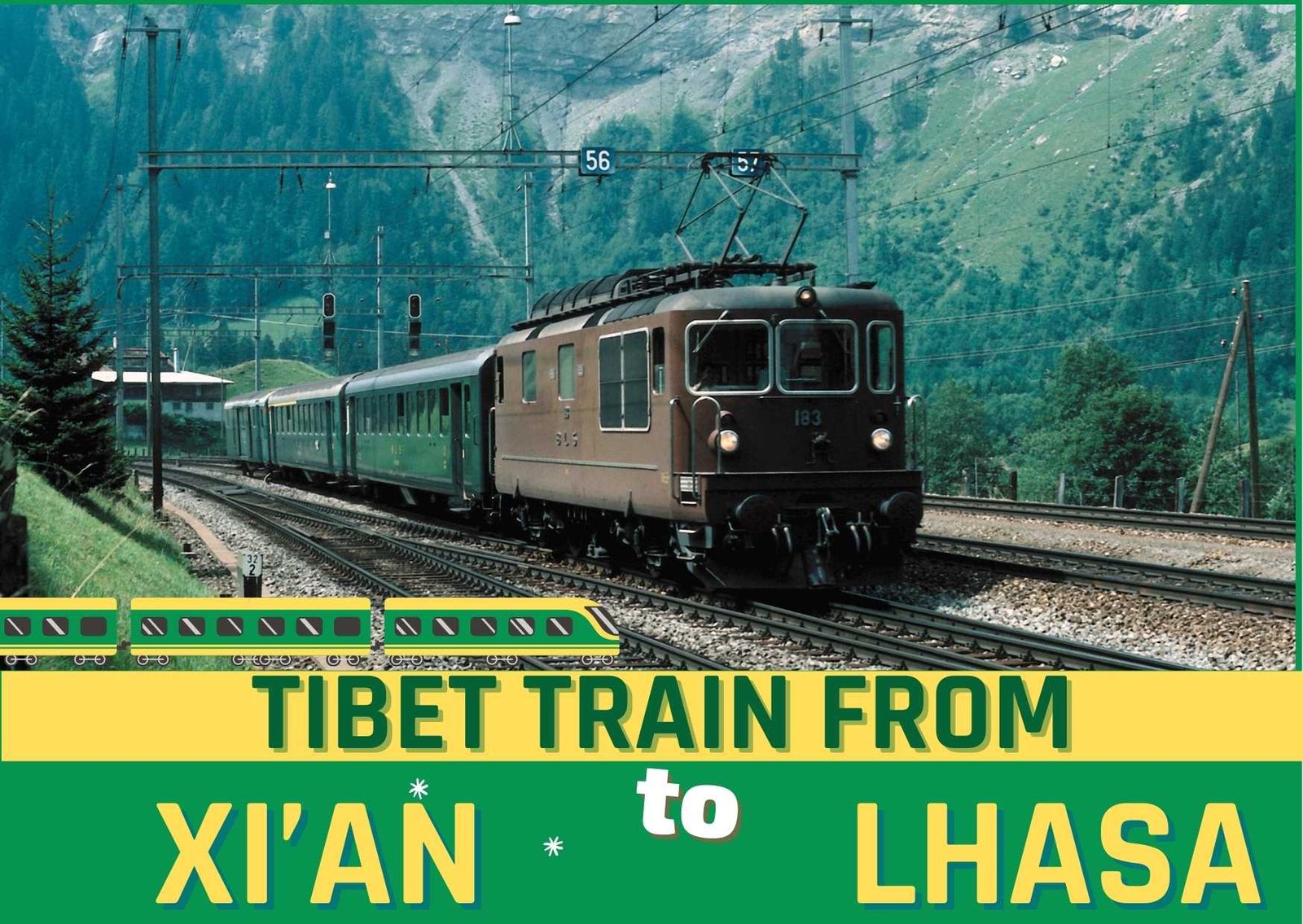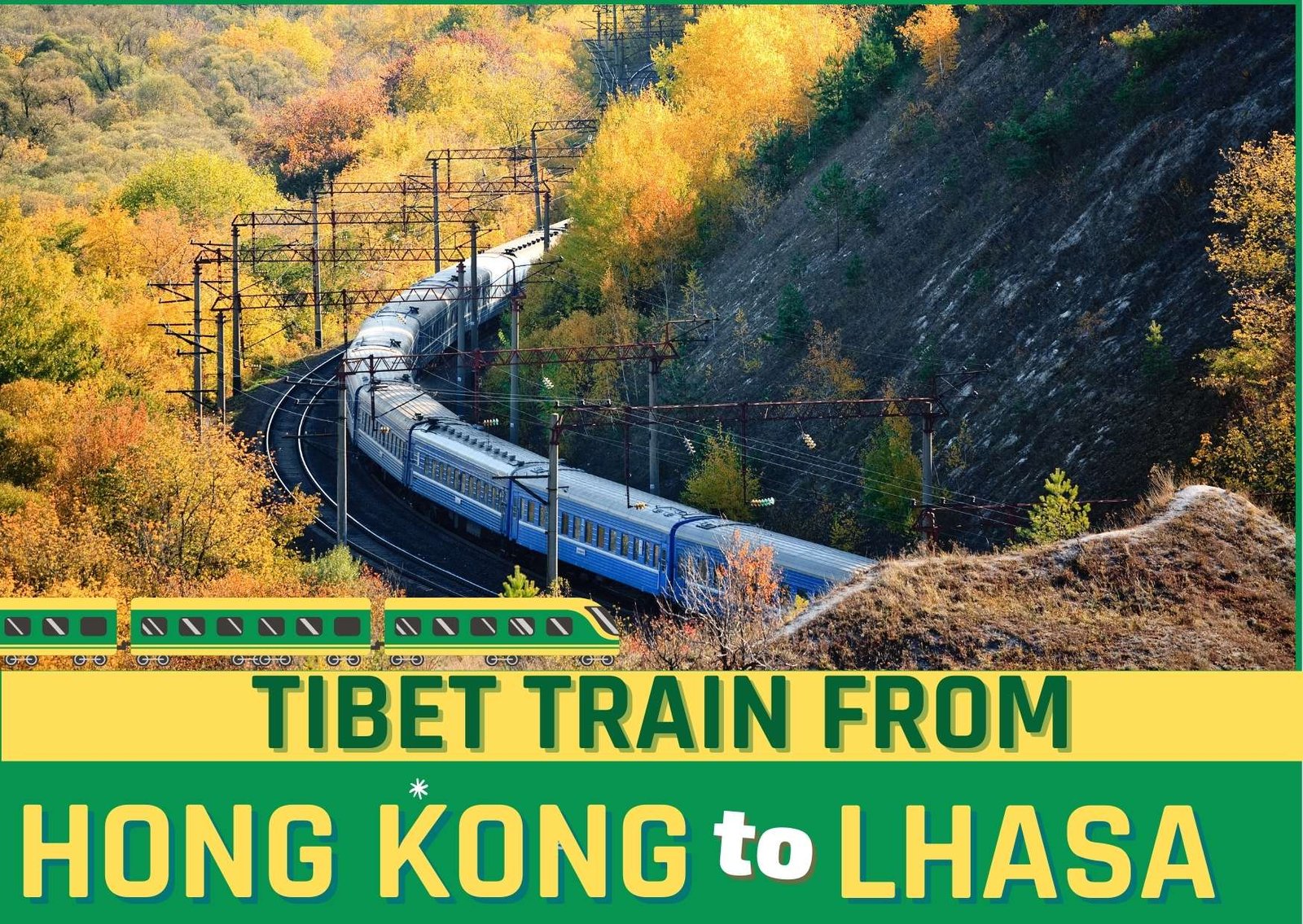Visit Tibet for a unique UK tourist experience. Plan carefully as an autonomous region of China. Our top tour operators offer local guides, private vehicles, and drivers. Independent travel is not allowed. It’s a great time to explore Tibet. Traveling from the United Kingdom to Tibet is a once-in-a-lifetime opportunity. There are several routes to take, with China and Nepal being the most popular. This guide has everything you need to know about traveling from the UK to Tibet via China or Nepal. Get ready to embark on an adventure and make unforgettable memories.
The Ultimate Guide: Traveling from the United Kingdom to Tibet via China or Nepal
Travelling from the UK to Tibet via China or Nepal offers an enchanting adventure. Choosing between the two routes is an exciting part of the planning process. China allows you to experience its vibrant culture, from the Great Wall to the Terracotta Army, while also showcasing the contrast between bustling cities and the peaceful Tibetan plateau. Travelling via Nepal takes you through the rugged and majestic Himalayan landscapes, with stunning views of mountains and waterfalls. It also provides a chance to immerse yourself in the spiritual heart of the region. Whichever route you choose, this journey promises an unforgettable adventure filled with cultural discoveries and natural wonders.
Understanding the logistics: Visa requirements and travel restrictions
When planning a trip from the UK to Tibet, it is important to understand the visa requirements and travel restrictions. If travelling through China, obtain a Chinese visa and a Tibet Travel Permit through a registered tour operator. If travelling through Nepal, get a Nepali visa and then travel to Tibet by road or air. Check with authorities for the latest information. Fulfilling these requirements ensures a smooth journey to experience the unique wonders of Tibet.
3. Route options: Pros and cons of travelling via China or Nepal
When planning a journey from the United Kingdom to Tibet, it’s essential to consider the different route options available. Two popular routes are through China or Nepal, each offering unique experiences and challenges. Let’s explore the pros and cons of each route.
1. Traveling from the United Kingdom to Tibet via China:
– Pros:
– Accessibility: China has a well-developed transportation infrastructure, making it relatively easier to reach Tibet from major cities like Beijing or Chengdu.
– Cultural Immersion: Traveling through China allows you to explore its rich history, vibrant cities, and diverse landscapes, providing a holistic cultural experience.
– Flexibility: China offers various transportation options, including flights, trains, and buses, giving you the flexibility to choose the most convenient and cost-effective mode of travel.
– Cons:
– Permits and Regulations: Traveling to Tibet from China requires obtaining permits and adhering to specific regulations set by the Chinese government. This process can be time-consuming and may involve additional costs.
– Altitude Acclimatization: The route via China involves gradually ascending to the high-altitude regions of Tibet, which requires proper acclimatization to prevent altitude sickness and ensure a safe and enjoyable journey.
– Longer Duration: Traveling via China may take more time compared to other routes, as you may need to make additional stops or connections along the way.
2. Traveling from the United Kingdom to Tibet via Nepal:
– Pros:
– Scenic Beauty: The route through Nepal offers breathtaking landscapes, including the majestic Himalayas, lush valleys, and picturesque villages, providing a visually stunning journey.
– Cultural Diversity: Nepal is a melting pot of cultures, and traveling through this country allows you to immerse yourself in its rich traditions, ancient temples, and warm hospitality.
– Shorter Duration: The route via Nepal may be comparatively shorter, especially if you fly directly to Kathmandu and then take a flight or land transportation to reach Tibet.
– Cons:
– Limited Access Points: Nepal has limited entry points to Tibet, primarily through the border crossing at Zhangmu. This may restrict your travel options and require careful planning.
– Permit Requirements: Traveling to Tibet from Nepal also requires obtaining permits, but the process is usually more straightforward compared to the Chinese route.
– Road Conditions: The road conditions in some parts of Nepal, especially in remote areas, can be challenging, and this may affect the overall travel experience.
Ultimately, the choice between travelling via China or Nepal depends on your preferences, time constraints, and willingness to navigate through specific regulations and challenges. Consider these pros and cons to make an informed decision and embark on an unforgettable journey to Tibet.
4. Traveling via China: Exploring the Silk Road and cultural highlights
Travelling from the United Kingdom to Tibet via China opens up a world of possibilities for adventure enthusiasts and culture seekers. One of the most captivating routes to Tibet is through the fabled Silk Road, a historic trade route that spans thousands of miles and offers a glimpse into the rich history and diverse cultures of the region.
Embarking on this journey, you will have the opportunity to explore awe-inspiring destinations such as Xi’an, Dunhuang, and Kashgar, which are all significant stops along the Silk Road. Xi’an, the ancient capital of China, is home to the world-renowned Terracotta Army, a fascinating archaeological site that showcases the impressive craftsmanship of ancient times.
As you venture further west, you’ll reach Dunhuang, a desert oasis that served as a vital trading hub along the Silk Road. Here, you can explore the magnificent Mogao Caves, a UNESCO World Heritage site housing a collection of intricately carved Buddhist statues and vibrant murals that date back centuries.
Continuing your journey, the city of Kashgar awaits, offering a glimpse into the traditional Uyghur culture. Immerse yourself in the bustling atmosphere of the famous Kashgar Sunday Market, where locals gather to trade goods and showcase their vibrant traditions. Don’t miss the opportunity to visit the iconic Id Kah Mosque, a stunning architectural masterpiece that stands as a symbol of religious harmony.
In addition to these cultural highlights, traveling via China also allows you to witness the breathtaking natural landscapes of the country. From the towering peaks of the Himalayas to the picturesque landscapes of the Tibetan Plateau, every step of the way offers a visual feast for the eyes.
As you make your way towards Tibet, be prepared for a mesmerizing experience that combines ancient history, vibrant cultures, and breathtaking landscapes. Traveling via China along the Silk Road is an adventure of a lifetime, where each destination unravels a new chapter in the story of this iconic route. So pack your bags, embark on this unforgettable journey, and let the wonders of the Silk Road fill your heart and soul.
5. Navigating through China: Transportation options and must-visit destinations
When traveling from the United Kingdom to Tibet, one of the most common routes is through China. Navigating through China can be an exciting and enriching experience, as the country offers a plethora of transportation options and must-visit destinations along the way.
Firstly, let’s talk about transportation. China has a well-developed transportation system that includes trains, buses, and domestic flights. One of the most popular ways to travel within China is by train. The railway network in China is extensive, and there are several routes that can take you to different cities and regions. Traveling by train not only offers comfort and convenience but also allows you to witness the stunning landscapes that China has to offer.
Another transportation option is taking domestic flights. China has numerous airports, and flying can be a time-saving option if you want to cover long distances quickly. Many major cities in China have international airports, making it easy to connect from the United Kingdom to Tibet.
Now, let’s explore some must-visit destinations in China. Beijing, the capital city, is often the starting point for travellers heading to Tibet. It is home to iconic landmarks such as the Great Wall of China and the Forbidden City. Exploring the historical and cultural sites in Beijing is a fantastic way to immerse yourself in Chinese history.
Shanghai, the vibrant metropolis, is another city worth visiting. With its towering skyscrapers, bustling markets, and vibrant nightlife, Shanghai offers a unique blend of modernity and tradition. Don’t miss the chance to walk along the famous Bund and explore vibrant neighbourhoods such as Tianzifang.
If you have the time, consider visiting Xi’an, the ancient capital of China. Here, you can marvel at the Terracotta Warriors, an army of life-sized clay soldiers that have been guarding Emperor Qin Shi Huang’s tomb for centuries. The city is also known for its rich cultural heritage and delicious local cuisine.
Lastly, Chengdu, the hometown of giant pandas, is a destination that animal lovers should not miss. Visit the Chengdu Research Base of Giant Panda Breeding and spend some time observing these adorable creatures in their natural habitat.
Navigating through China offers a fantastic opportunity to explore diverse landscapes, immerse yourself in rich culture, and create unforgettable memories. Make sure to plan your itinerary in advance, considering your interests and the time you have available, to fully enjoy your journey from the United Kingdom to Tibet.
6. Traveling via Nepal: The scenic route and Himalayan adventures
If you’re looking for a more scenic and adventurous route to reach Tibet from the United Kingdom, travelling via Nepal is an excellent choice. Nepal, nestled in the heart of the Himalayas, offers breathtaking landscapes, cultural experiences, and thrilling adventures that will make your journey truly unforgettable.
To begin your journey, you can fly from the UK to Kathmandu, the capital city of Nepal. As your plane descends, you’ll catch your first glimpse of the majestic Himalayan peaks, creating a sense of awe and anticipation for the adventures ahead.
Once you arrive in Kathmandu, take some time to explore this vibrant city. Immerse yourself in the rich Nepalese culture by visiting ancient temples, and bustling markets, and sampling the delicious local cuisine. Durbar Square, Boudhanath Stupa, and Pashupatinath Temple are must-visit attractions that showcase the city’s historical and religious significance.
From Kathmandu, embark on a scenic road trip towards the Nepal-Tibet border. The journey will take you through picturesque landscapes, charming villages, and winding mountain roads. As you venture further into the Himalayas, the snow-capped peaks will surround you, creating a surreal and awe-inspiring atmosphere.
Upon reaching the Nepal-Tibet border, you’ll undergo the necessary immigration procedures before continuing your journey into Tibet. The border crossing at Zhangmu is a popular entry point, and from there, you can hire a private vehicle or join a guided tour to explore Tibet’s wonders.
Tibet offers a myriad of breathtaking sights and experiences. Visit the iconic Potala Palace in Lhasa, an architectural masterpiece that showcases Tibet’s rich history and spirituality. Explore the ancient monasteries of Sera and Drepung, where you can witness monks engaging in philosophical debates and immerse yourself in the peaceful ambience.
For adventure enthusiasts, Tibet offers thrilling opportunities for trekking, mountaineering, and exploring remote Himalayan valleys. The Everest Base Camp trek is a bucket-list experience, allowing you to stand in the shadow of the world’s highest peak and soak in the awe-inspiring beauty of the Himalayas.
Traveling from the United Kingdom to Tibet via Nepal not only offers a scenic route but also allows you to immerse yourself in the unique cultures and landscapes of both Nepal and Tibet. It’s a journey that combines adventure, spirituality, and natural beauty, creating memories that will last a lifetime.
7. Crossing the border: Document requirements and entry procedures
Crossing the border from the United Kingdom to Tibet, whether through China or Nepal, requires careful attention to document requirements and entry procedures. As a traveller, it is essential to ensure that you have all the necessary documents in order to avoid any complications or delays during your journey.
If you choose to travel via China, you will need to apply for a Chinese visa before your departure. The type of visa will depend on your travel plans and duration of stay. It is advisable to contact the Chinese embassy or consulate in advance to inquire about the specific visa requirements and application process.
In addition to the Chinese visa, you will also need a Tibet Travel Permit to enter Tibet. This permit is usually obtained by booking a tour with a registered Tibetan travel agency. The agency will assist you in obtaining the necessary permits, including the Tibet Travel Permit, Alien’s Travel Permit, and Military Permit if required. It is important to note that independent travel to Tibet is not permitted, and you must be part of an organized tour group.
If you opt to travel via Nepal, the process is slightly different. You will need a valid passport with at least six months of validity remaining. A Nepali visa can be obtained on arrival at the Tribhuvan International Airport in Kathmandu or at the Nepal-China border crossing points. However, it is recommended to obtain a visa in advance from the Nepali embassy or consulate in the United Kingdom to avoid any potential delays.
Once you have entered Nepal, you will need to obtain a Tibet Travel Permit from a registered travel agency in Kathmandu. This permit allows you to travel from Nepal to Tibet by road or air. It is important to note that travelling overland from Nepal to Tibet requires additional permits, such as the Border Pass and the Alien’s Travel Permit.
Regardless of the route you choose, it is crucial to have all your documents in order before embarking on your journey. Failure to comply with the document requirements and entry procedures may result in denied entry or other complications at the border. Therefore, thorough research and proper preparation are key to a smooth and hassle-free travel experience to Tibet from the United Kingdom.
8. Preparing for high-altitude travel: Tips for acclimatization and health considerations
Preparing for high-altitude travel is crucial when planning a trip to Tibet, whether you are traveling via China or Nepal. The drastic change in altitude can have a significant impact on your health and well-being if not properly addressed. Therefore, it is essential to take certain precautions and follow specific acclimatization guidelines to ensure a safe and enjoyable journey.
First and foremost, it is recommended to consult with a healthcare professional before embarking on a high-altitude trip. They can assess your overall health and provide personalized advice based on any pre-existing medical conditions you may have. Additionally, they may prescribe medications such as acetazolamide (Diamox) to help prevent altitude sickness.
Acclimatization is a gradual process that allows your body to adapt to the lower oxygen levels at higher altitudes. It is advisable to spend a few days in a moderately high-altitude location before reaching Tibet’s extreme elevations. Popular acclimatization stops include Lhasa, Shigatse, or Kathmandu if traveling via Nepal. This allows your body to adjust and minimizes the risk of altitude-related illnesses.
During your stay at high altitudes, it is important to take it easy and avoid overexertion. Give yourself time to rest and allow your body to acclimate naturally. Stay hydrated by drinking plenty of water and avoid alcohol and caffeine as they can contribute to dehydration and exacerbate altitude sickness symptoms.
It is also crucial to be mindful of the symptoms of altitude sickness, which can include headaches, dizziness, nausea, shortness of breath, and fatigue. If you experience any of these symptoms, it is essential to descend to a lower altitude immediately and seek medical attention if necessary. Ignoring these symptoms can lead to more severe conditions such as High-Altitude Pulmonary Edema (HAPE) or High-Altitude Cerebral Edema (HACE), which can be life-threatening.
Furthermore, packing appropriate clothing and gear for high-altitude conditions is essential. Dressing in layers allows you to adjust to temperature fluctuations throughout the day. Additionally, consider carrying a portable oxygen canister or a small oxygen concentrator for added peace of mind in case of any discomfort or emergency situations.
By following these tips for acclimatization and health considerations, you can ensure a safer and more enjoyable journey to Tibet. Remember to prioritize your well-being and take necessary precautions to fully appreciate the breathtaking landscapes and rich cultural experiences that await you in this mystical land.
9. Immersing in Tibetan culture: Festivals, monasteries, and local customs
When travelling from the United Kingdom to Tibet, one of the most enriching experiences awaits you – immersing yourself in the vibrant Tibetan culture. Tibet is a land steeped in ancient traditions, colorful festivals, awe-inspiring monasteries, and captivating local customs.
One of the highlights of Tibetan culture is its festivals. Throughout the year, Tibetans celebrate a myriad of festivals, each with its own unique rituals and significance. From the grand spectacle of the Tibetan New Year, also known as Losar, to the sacred Butter Lamp Festival and the lively Shoton Festival, there is always something to celebrate in Tibet. Attending these festivals allows you to witness traditional dances, vibrant costumes, and religious ceremonies that have been passed down through generations.
In addition to festivals, exploring the monasteries is a must for any traveller seeking to immerse themselves in Tibetan culture. Tibet is home to some of the most revered Buddhist monasteries in the world, such as the iconic Potala Palace in Lhasa, which was once the residence of the Dalai Lama. Visiting these monasteries not only offers a glimpse into the spiritual practices of Tibetan Buddhism but also allows you to marvel at the architectural wonders and intricate artwork that adorn these sacred sites.
To truly understand and appreciate Tibetan culture, it is essential to engage with the local customs and traditions. Tibetans are known for their warm hospitality and strong sense of community. Take the time to interact with the locals, learn about their way of life, and partake in their customs. Whether it’s joining a traditional Tibetan tea ceremony, participating in a prayer flag ceremony, or trying your hand at traditional Tibetan crafts, these experiences will leave a lasting impression and deepen your understanding of the rich cultural heritage of Tibet.
Immersing yourself in Tibetan culture is a transformative experience that will stay with you long after your journey comes to an end. From the vibrant festivals that ignite the spirit to the serene monasteries that inspire contemplation, and the warm embrace of the local customs, Tibet offers a unique and captivating cultural experience that will leave you enchanted.
10. Conclusion: Embarking on an unforgettable journey from the United Kingdom to Tibet via China or Nepal
Embarking on a journey from the United Kingdom to Tibet via China or Nepal is an adventure of a lifetime. Whether you choose to travel through the vibrant cities of China or the breathtaking landscapes of Nepal, this ultimate guide has provided you with all the essential information and tips to make your trip a memorable one.
Both routes offer unique experiences and allow you to immerse yourself in the rich cultural heritage of these regions. From exploring the ancient wonders of Beijing’s Forbidden City and the Great Wall of China to witnessing the majestic beauty of Mount Everest in Nepal, every step of your journey will be filled with awe and wonder.
However, it is important to note that travelling to Tibet requires careful planning and preparation. The region is known for its high altitude and remote locations, so it is crucial to acclimatize properly and be aware of the potential challenges that may arise during your trip. It is advisable to consult with a travel agency or seek guidance from experienced travellers who have already ventured on this route.
Regardless of whether you choose to enter Tibet through China or Nepal, the journey itself is bound to be filled with stunning landscapes, captivating cultures, and unforgettable memories. From the bustling streets of Kathmandu to the serene monasteries of Lhasa, every destination along the way offers its own unique charm and allure.
As you conclude your travel preparations, remember to pack essentials such as comfortable clothing, necessary travel documents, and any required permits. It is also wise to familiarize yourself with the local customs and traditions to ensure a respectful and enjoyable experience.
In conclusion, travelling from the United Kingdom to Tibet via China or Nepal is an extraordinary adventure that will leave you with memories to last a lifetime. Whether you are drawn to the vibrant cities and historical landmarks of China or the natural wonders and tranquillity of Nepal, this journey promises to be an unforgettable experience. So, pack your bags, prepare your spirit for adventure, and get ready to embark on an incredible journey to the roof of the world.
We hope you found our ultimate guide to travelling from the United Kingdom to Tibet via China or Nepal informative and helpful in planning your journey. Travelling to Tibet is a once-in-a-lifetime experience, and understanding the different routes and requirements can make your trip more enjoyable and hassle-free. Whether you choose to go through China or Nepal, be sure to research and prepare accordingly, obtaining the necessary visas and permits. Embrace the breathtaking landscapes, rich culture, and spiritual essence that await you in Tibet. Safe travels on your incredible adventure!
How to Travel from the United Kingdom to Tibet
To reach Tibet from the UK, choose Nepal or China as your starting point. If you go through Nepal’s Gyirong Port, expect a 12-hour flight to Kathmandu with layovers. There are no direct flights from the UK to Nepal, so the journey can take up to 35 hours.
The flights from Beijing to Lhasa are available twice a day, with a flight duration of around 4 hours and 30 minutes.
Trains depart from Beijing to the capital of the Tibetan plateau every day, covering a distance of approximately 3,757 km. The train journey takes about 41-42 hours to cross China, passing through six provinces. The train departs from Beijing in the evening and arrives in Lhasa in the afternoon on the third day.

Travel to mainland China is convenient with non-stop flights from London to Beijing, Shanghai, and Guangzhou. Additionally, you can also reach mainland China by taking a flight to Hong Kong. The fastest flight to Beijing takes approximately 13 hours, while flights to Hong Kong can take around 11 hours. Hong Kong, a former British colony, is a popular choice for tourists from Europe as it offers great tourism opportunities. From Hong Kong, you can easily access other major cities in China either by train or connecting flights, allowing you to continue your journey to Tibet.
The flight from Shanghai is not a direct flight but stops at Xi’an. A flight from Shanghai takes approximately 7 hours and 55 minutes, and a two-hour transit in Xi’an
The train route from Shanghai to Lhasa is the second longest, covering a distance of 4,373 kilometres in 46-47 hours. The train departs from Shanghai every night and reaches Lhasa before noon on the third day. The train offers soft and hard sleeper bunks, costing around US$ 118 per person.

Get to Tibet from the United Kingdom via Mainland China
To reach Tibet from China, you can take either a train or a flight. If you choose to fly, you can find flights to Lhasa, the capital of Tibet, from various cities in China such as Beijing, Shanghai, Guangzhou, Chengdu, Chongqing, Xian, Kunming, Shangri-La, Xining, Nanjing, or Xiamen. Guangzhou is the closest city in China to Hong Kong with direct flights to Lhasa, and it is easily accessible by both flight and train. On average, flights from China to Tibet typically range from two to six hours in duration and cost around UK£420.
Train travel to Tibet is popular among tourists. Trains depart daily from Beijing, Shanghai, Guangzhou, Lanzhou, Xining, Chengdu, and Chongqing. All trains pass through Xining, the start of the Qinghai Tibet Railway, the world’s highest railway. Ticket costs vary by departure city and there are different classes available. Sleeping compartments are recommended for the long journey across the plateau. The trip from Xining to Lhasa takes 22 hours, while the longest journey from Guangzhou lasts 55 hours, resulting in a three-day, two-night ride.
Get to Tibet from the United Kingdom via Nepal
Getting to Lhasa from Nepal can be done by a flight across the plateau, with some great views of Mount Everest along the way, or by an overland trip in cars across the border, which lies at ResuoBridge, between Rasuwagadhi Fort and Gyirong Port.

Kathmandu is the only country with a direct flight to Lhasa, a flight from Kathmandu to Lhasa costs about US$ 300.The flight time is relatively short, the journey of 600 km takes about an hour. There are two direct flights from Kathmandu to Lhasa, CA408 (12: 10-16:00) and 3U8720 (11:30-15: 10).
Flights from Kathmandu to Lhasa take 60-90 mins and cost UK£190 approx. Choose from 3 Chinese airlines for the best price. Book in Nepal if travelling with a group in Tibet.
Required Documents for Tibet Tour from the United Kingdom
Getting to Tibet requires several documents from the Chinese government and the Tibet Tourism Bureau in Lhasa, the stunning capital city of the Tibet Autonomous Region. The majority of these must be obtained by your tour operator, although your Chinese Entry Visa if travelling through mainland China, must be done in the U.K. before you leave.
There are actually two routes to get to Tibet, and unfortunately, a direct flight to Lhasa is not one of them. Travellers from the U.K. can travel through any of a number of gateway cities in mainland China, or enter the Tibetan region through Nepal, the home of the famous Ghurkha Regiment of the British Army.
Chinese Entry Visa
The Chinese visa can be obtained from the Chinese Embassy in London or Consular offices in Edinburgh, Manchester, and Belfast. The cost is £30 for a 30-day visa. For travelling to Tibet via Nepal, a Group Tourist Visa can be obtained through a tour operator. British citizens can use a Visa On Arrival in Nepal, but the fee must be paid in US dollars. The application process takes three days, and the Tibet Travel Permit is required to enter Tibet. It must be carried at all times for border crossings and transportation.
Other Permits
There are some other required travel documents for travel to areas of Tibet outside Lhasa city, such as the Alien’s Travel Permit for Everest Base Camp tours, Military Permit for Mount Kailash tours, etc. Please feel free to contact us. Just tell us your travel plan, and our professional travel expert will help you arrange all the required travel documents to Tibet.




































